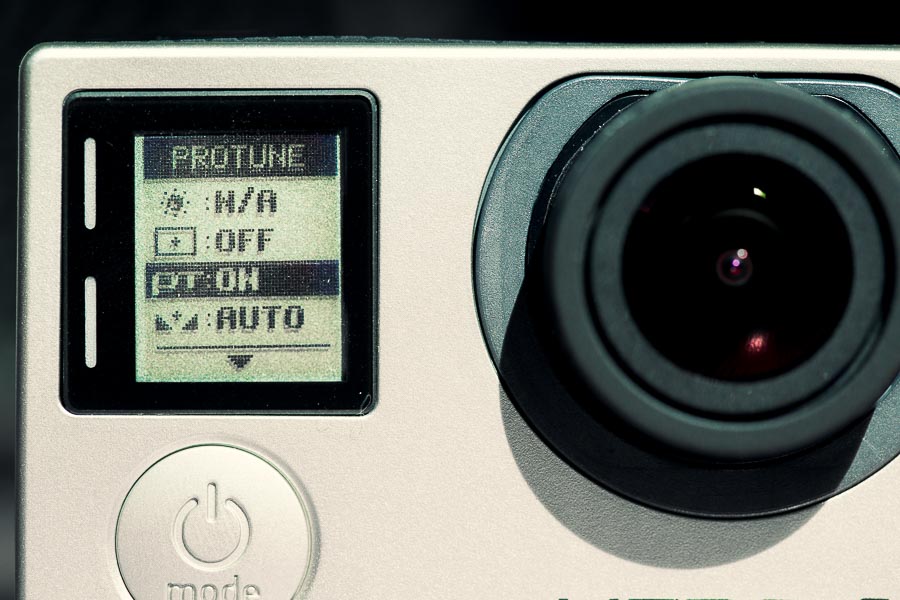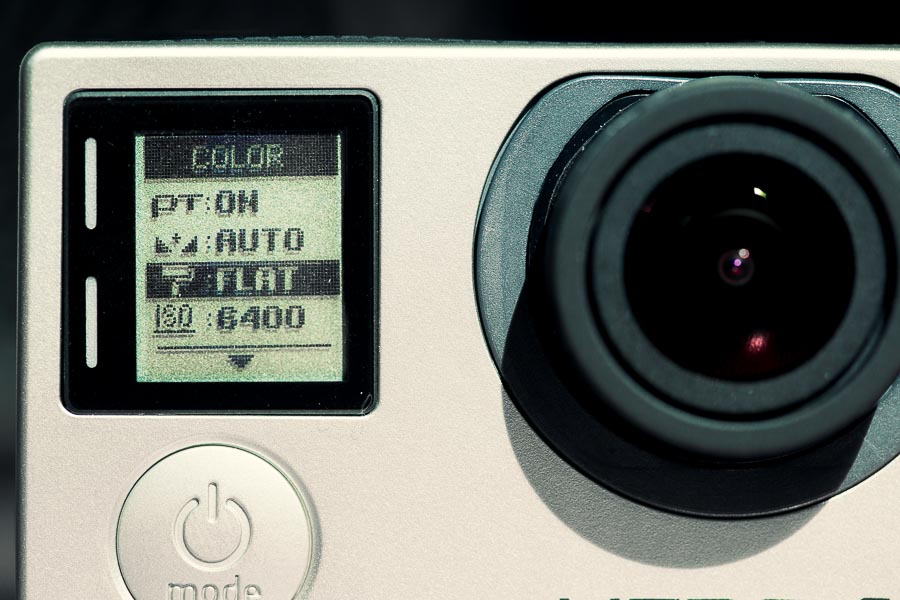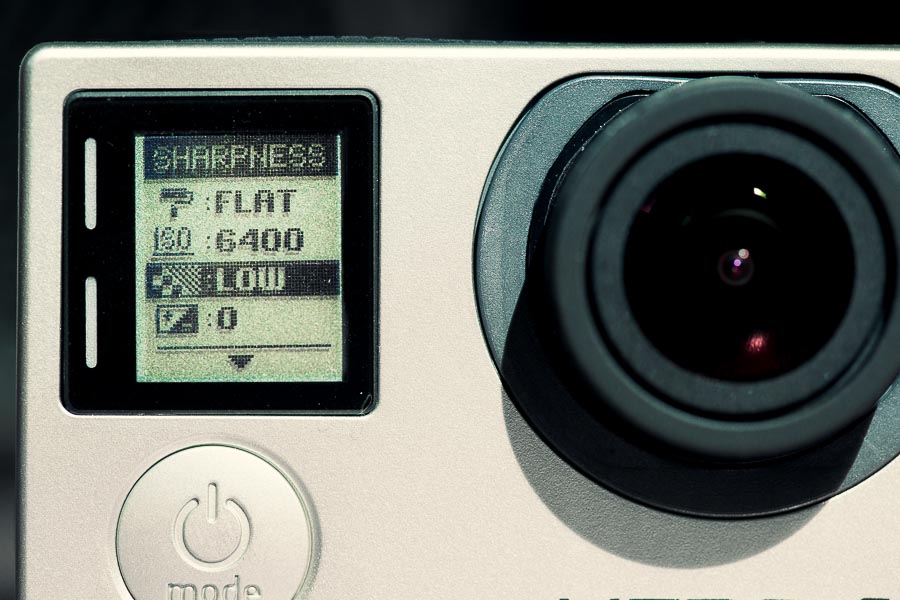That's Prolost Flat for GoPro. And note that, in the HERO4, these settings can also be applied to stills. This requires a separate trip into the settings menu, as each shooting mode now remembers its own settings.
Road Rash, But no Faceplants
What's not to like about the HERO4? Not being a “journalist,” it’s hard to complain about a camera I’ve been given for free. So here's me trying:
- The menus, while greatly improved over previous versions, are still clunky to navigate.
- If you're only an occasional GoPro user, it's easy to get bit by getting a setting just slightly wrong. On that tiny screen, you may well miss a small detail that can render your footage significantly less awesome. For example, I took some advice and set my minimum ISO to 400 for one of our activities. But there wasn't enough light for ISO 400 and 60 fps, so my HERO4 Black had no option but to slow its shutter to 1/30, meaning I didn't get 60 fps at all, I got 30 smeary frames per second in a 60 fps stream. I won't make that mistake again, I hope, but there is a learning curve here.
- The choices of aspect ratio, resolution, and frame rate, and how they all interact, can be confusing. And the default setting is a new mode that I don't like at all, yet still managed to accidentally use a few times. It's called "Superview," and it uses a full-sensor capture which is then stretched to fill a 16:9 frame. The stretch is biased more toward the edges, like a terrible setting on a terrible HD TV (or a crappy HD upconverted movie on cable). GoPro sees this mode as a way to get maximum coverage and fill modern TVs with no fuss in post, but if there was a button to wipe this setting from my GoPros, I'd press it. Instead, it's the default, which means we'll see a lot of it. The Aspect Ratio Police are going to be busy.
- As I mentioned, the the 2.7K 4:3 option is inexplicably limited to 29.97 fps. Maybe a firmware update could fix this.
- The image quality is about what you'd expect. There's compression artifacting, and noise, and everything you're accustomed to from GoPros past. These are the kinds of problems that drive me crazy in my own GoPro footage, yet never seem to bother me in other people's. That’s because, to get back to my initial observation, the GoPro is the ultimate content-is-king camera. If what you’re shooting isn’t interesting enough to power through some macroblocking, you’re using the wrong camera.
That’s it. That’s the worst I can say about the GoPro HERO4. In the past, one might have been able to find an angle from which to balk at the price of a GoPro, but the entry-level Hero, at $129.99 USD, eliminates that complaint.
GoPro Cinema
A GoPro has its own look. It’s a difficult camera to evaluate in the context of “cameras,” because it speaks it’s own language so strongly. If you try to intercut it with other footage, you can expect many non-camera people in your audience to recognize “a GoPro shot” when they see it. In a historical epic, this would be a risky move. In a Jeep commercial, it could be as natural as lens flares and sky gradients.
The GoPro look is not mandatory though. At some resolutions, you can opt for a cropped field of view, for a less crazy-wide image. And the fisheye distortion is actually quite easy to dial back in post, using either the Lens Distortion effect in Premiere Pro, the Optics Compensation effect in After Effects, or the Lens Distortion tool in Magic Bullet Looks.
The last time I used a GoPro for filmmaking, I embraced the signature look. When an audience sees that telltale barrel distortion and poppy palette, they know they’re about to see something really cool, that really happened. I used this to my advantage as I gradually escalated the mayhem in Run Like Hell well past reality and into pure science fiction.
I love having the GoPro in my arsenal, even if I don’t use it as often as my other cameras.
Go Amateur
The GoPro Studio software comes with template projects, pre-populated with professional footage, over which you can drop your own shots for a shortcut to a ready-made video. One of the samples stands out, because instead of Olympic snowboarders or bikini-clad surfers, it’s nothing more than GoPro CEO Nick Woodman playing in a pool with his kids. There’s one shot in that template—just a simple moment of his boy jumping into the water—that is so infectiously ebullient that I literally gasped when I saw it. I realized in that moment that maybe I shouldn’t evaluate the GoPro as a filmmaker, or a camera nut—but as a dad, with a kid who seems to grow at light speed. I’m so grateful that Nick captured this simple, joyful moment, and that he shared it with us all. If you never see another GoPro shot in one of my films again, don’t think for second that I’m not using these delightful little cameras. If I’m doing things right, I might just be using them more for life than for work.















